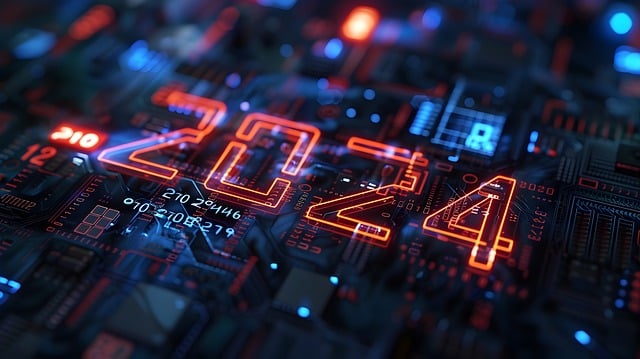The Rise of AI Automated Trading Software in 2024
Author: Jameson Richman Expert
Published On: 2024-09-23
Prepared by Jameson Richman and our team of experts with over a decade of experience in cryptocurrency and digital asset analysis. Learn more about us.
As we delve into 2024, the landscape of trading has evolved dramatically. With the advent of advanced technologies, particularly artificial intelligence (AI), traders and investors are turning to automated trading software as a means to optimize their trading strategies and streamline operations. This article explores the burgeoning industry of AI automated trading software, its benefits, potential drawbacks, and its future trajectory.

What is AI Automated Trading Software?
AI automated trading software refers to platforms that utilize AI algorithms to execute trades automatically on behalf of users. These sophisticated systems leverage vast amounts of market data and employ machine learning techniques to identify patterns and make predictions, ultimately aiming to enhance trading performance.
How AI Trading Works
At its core, AI automated trading operates on statistical analysis and predictive modeling. Here’s a brief overview of the process:
- Data Collection: The software collects massive data sets from various market sources, including historical prices, trading volumes, news articles, and social media trends.
- Data Processing: Utilizing machine learning algorithms, the software processes this information to identify trends and anomalies.
- Backtesting: AI trading systems conduct backtests, simulating trades using historical data to evaluate their strategy's effectiveness.
- Trade Execution: Once optimized, trades are executed automatically based on predefined criteria, removing emotional bias from the decision-making process.
Key Features of AI Trading Software
AI trading software is equipped with various features that distinguish it from traditional trading methods:
- Scalability: AI systems can analyze and execute more trades in shorter time frames than human traders.
- Emotionless Trading: By removing human emotions from the equation, AI systems minimize the likelihood of making impulsive decisions.
- Customization: Many platforms allow users to tailor algorithms based on their risk tolerance and investment preferences.
- Real-time Data Analysis: AI tools constantly analyze live data feeds to adapt strategies on the fly.
Benefits of AI Automated Trading Software
The transition to AI-powered trading systems brings several advantages that are reshaping the trading landscape:
Efficiency and Speed
One of the most notable benefits of AI trading software is its ability to operate with unparalleled efficiency and speed. Trades executed within milliseconds can mean the difference between profit and loss, particularly in high-frequency trading environments. As the financial markets become increasingly competitive, trading speed is paramount.
Enhanced Decision-Making
AI systems use data-driven insights to inform trading decisions, often outperforming human traders who might be subject to cognitive biases. These systems are able to analyze complex datasets, uncover hidden trends, and make informed predictions that humans could overlook.
24/7 Market Monitoring
Unlike human traders, AI can monitor global markets around the clock without fatigue. This capability enables traders to capture opportunities in various time zones, providing a substantial advantage in a fast-paced market environment.
Risk Management
Another critical advantage is the sophisticated risk management tools embedded in AI trading platforms. These tools can adjust trading strategies in real-time, mitigating potential losses based on changing market conditions.
Challenges and Considerations
Despite the impressive benefits, AI automated trading software also comes with its share of challenges and considerations:
Technical Failures
As with any technology, AI trading systems are not immune to malfunctions or bugs. Technical failures could lead to erroneous trades, causing significant financial repercussions for users. Thus, traders must exercise caution and ensure they have appropriate risk management strategies in place.
Market Volatility
While AI systems can respond to market changes quickly, extreme volatility can pose challenges. In unpredictable market conditions, AI algorithms that rely on historical data may trigger unexpected sell-offs, exacerbating losses.
Dependence on Data Quality
The effectiveness of AI trading relies heavily on the quality of the input data. Poor quality or biased data can lead to inaccurate predictions, which can undermine trading strategies. Therefore, users should ensure they're sourcing data from reputable platforms.

The Future of AI Automated Trading Software
Looking ahead, the future of AI automated trading appears promising, marked by continuous advancements in machine learning algorithms and data processing capabilities. Here are several trends likely to shape the industry:
Increased Adoption Across Asset Classes
As more traders and institutions recognize the benefits of AI, we can expect to see its adoption across various asset classes beyond stocks, including cryptocurrencies, commodities, and forex. This diversification offers traders more opportunities for generating profits.
Integration of Blockchain Technology
In 2024, we anticipate a greater alliance between AI and blockchain technology. The decentralized nature of blockchain could enhance the transparency and security of trading processes, potentially leading to innovations in how trades are executed and recorded.
Stronger Regulatory Frameworks
As AI trading becomes more prevalent, regulators will likely implement stricter guidelines to ensure fair practices. Traders will need to stay informed about compliance requirements to avoid potential pitfalls.
Personal Reflections
Navigating the world of AI automated trading software is both exciting and daunting. The potential benefits are undeniable, and I believe that the future will only bring further advancements that can democratize trading, making it accessible to more individuals. However, it is crucial for traders, especially beginners, to understand the risks involved and proceed with caution.
In my opinion, the balance between automation and human decision-making is essential. While AI can greatly enhance efficiency and accuracy, human intuition and experience remain invaluable. The ideal trading strategy will blend both worlds, utilizing technology while retaining an element of human oversight.
As we march through 2024, traders should embrace the innovations AI automated trading software brings, ensuring they maintain a keen awareness of the associated complexities. The digital landscape in finance is evolving, and those who adapt will thrive in this new era of trading.
Conclusion
In conclusion, AI automated trading software stands at the forefront of the trading revolution in 2024. Its capabilities to enhance trading performance through efficiency, speed, and data-driven insights are reshaping the industry landscape. However, as with any technological advancement, potential challenges must be navigated diligently. As we embrace AI's transformative power, the foundation of successful trading will remain rooted in sound strategy, continuous learning, and adaptive thinking.